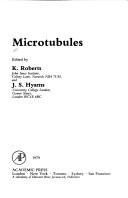| Listing 1 - 10 of 30 | << page >> |
Sort by
|
Periodical
Abstract | Keywords | Export | Availability | Bookmark
 Loading...
Loading...Choose an application
- Reference Manager
- EndNote
- RefWorks (Direct export to RefWorks)
Oncology. Neoplasms --- kwaadaardige gezwellen --- Sarcoma --- Sarcome --- Periodicals. --- Périodiques --- Sarcoma. --- Health Sciences --- Life Sciences --- Clinical Medicine --- General and Others --- Micro and Molecular Biology --- oncology --- sarcoma --- Oncology. --- Connective Tissue. --- Cancer --- Tumors --- Sarcoma, Epithelioid --- Sarcoma, Soft Tissue --- Sarcoma, Spindle Cell --- Epithelioid Sarcoma --- Epithelioid Sarcomas --- Sarcomas --- Sarcomas, Epithelioid --- Sarcomas, Soft Tissue --- Sarcomas, Spindle Cell --- Soft Tissue Sarcoma --- Soft Tissue Sarcomas --- Spindle Cell Sarcoma --- Spindle Cell Sarcomas
Periodical
Abstract | Keywords | Export | Availability | Bookmark
 Loading...
Loading...Choose an application
- Reference Manager
- EndNote
- RefWorks (Direct export to RefWorks)
Sarcoma --- Sarcoma. --- Sarcoma, Epithelioid --- Sarcoma, Soft Tissue --- Sarcoma, Spindle Cell --- Epithelioid Sarcoma --- Epithelioid Sarcomas --- Sarcomas --- Sarcomas, Epithelioid --- Sarcomas, Soft Tissue --- Sarcomas, Spindle Cell --- Soft Tissue Sarcoma --- Soft Tissue Sarcomas --- Spindle Cell Sarcoma --- Spindle Cell Sarcomas --- neoplasms --- sarcomas --- tumours --- Cancer --- Tumors --- Oncology. Neoplasms --- Oncology
Book
Year: 2020 Publisher: Frontiers Media SA
Abstract | Keywords | Export | Availability | Bookmark
 Loading...
Loading...Choose an application
- Reference Manager
- EndNote
- RefWorks (Direct export to RefWorks)
It is now well established that sleep and wakefulness are locally regulated. In fact, typical sleep hallmarks, such as slow waves and spindles, display a clear regional modulation based on maturational and experience-dependent brain plasticity. Of note, these regional changes have been suggested to reflect the off-line processing and transformation of wake-dependent brain modifications, in line with a direct involvement of sleep in learning and memory consolidation. In addition, recent work showed that islands of wakefulness and sleep may often coexist in the same individual. Indeed, the incidence of local sleep-like episodes during wakefulness increases following sleep restriction or deprivation, but also as a consequence of the reiterated or extended ‘use’ of task-related brain areas. Such sleep-like activity seems to represent an index of ‘functional fatigue’ and may have a significant impact on behavior and cognition. On the other hand, local wake-like activity may occur during sleep and has been suggested to be involved in the generation and characterization of dream experiences. Finally, alterations in the balance between local aspects of sleep and wakefulness may contribute to explain symptoms commonly attributed to many sleep disorders, such as insomnia or sleepwalking. However, preliminary evidence has also pointed to their potential involvement in neurological (e.g., stroke) and psychiatric (e.g., major depression) pathological conditions. This Research Topic collects articles related to the investigation and characterization of local aspects of sleep and wakefulness.
Science: general issues --- Neurosciences --- Local sleep --- hd-EEG --- MEG --- fMRI-EEG --- Sleep --- K-complex --- Slow Wave --- sleep spindle --- connectivity --- plasticity --- Disconnection --- Local sleep --- hd-EEG --- MEG --- fMRI-EEG --- Sleep --- K-complex --- Slow Wave --- sleep spindle --- connectivity --- plasticity --- Disconnection
Book
Year: 2020 Publisher: Frontiers Media SA
Abstract | Keywords | Export | Availability | Bookmark
 Loading...
Loading...Choose an application
- Reference Manager
- EndNote
- RefWorks (Direct export to RefWorks)
It is now well established that sleep and wakefulness are locally regulated. In fact, typical sleep hallmarks, such as slow waves and spindles, display a clear regional modulation based on maturational and experience-dependent brain plasticity. Of note, these regional changes have been suggested to reflect the off-line processing and transformation of wake-dependent brain modifications, in line with a direct involvement of sleep in learning and memory consolidation. In addition, recent work showed that islands of wakefulness and sleep may often coexist in the same individual. Indeed, the incidence of local sleep-like episodes during wakefulness increases following sleep restriction or deprivation, but also as a consequence of the reiterated or extended ‘use’ of task-related brain areas. Such sleep-like activity seems to represent an index of ‘functional fatigue’ and may have a significant impact on behavior and cognition. On the other hand, local wake-like activity may occur during sleep and has been suggested to be involved in the generation and characterization of dream experiences. Finally, alterations in the balance between local aspects of sleep and wakefulness may contribute to explain symptoms commonly attributed to many sleep disorders, such as insomnia or sleepwalking. However, preliminary evidence has also pointed to their potential involvement in neurological (e.g., stroke) and psychiatric (e.g., major depression) pathological conditions. This Research Topic collects articles related to the investigation and characterization of local aspects of sleep and wakefulness.
Local sleep --- hd-EEG --- MEG --- fMRI-EEG --- Sleep --- K-complex --- Slow Wave --- sleep spindle --- connectivity --- plasticity --- Disconnection
Book
ISBN: 0123643635 Year: 1972 Publisher: New York (N.Y.): Academic press
Abstract | Keywords | Export | Availability | Bookmark
 Loading...
Loading...Choose an application
- Reference Manager
- EndNote
- RefWorks (Direct export to RefWorks)
Cell Nucleus. --- Chromosomes --- 576.316 --- 576.311.348.7 --- 576.353 --- Spindle (Cell division) --- #WPLT:dd.prof.J.Vendrig --- Cell organelles --- Meiosis --- Mitosis --- Chromosome theory --- Cell nuclei --- Crossing over (Genetics) --- Cytotaxonomy --- Genetics --- Karyokinesis --- Linkage (Genetics) --- Cell Nuclei --- Nuclei, Cell --- Nucleus, Cell --- physiology. --- Microtubulars --- Mitosis. Karyokinesis. Indirect cell division --- Chromosomes. --- Cell nucleus --- CHROMOSOMES --- physiology --- 576.353 Mitosis. Karyokinesis. Indirect cell division --- 576.311.348.7 Microtubulars --- 576.316 Chromosomes --- Spindle (Cell division). --- Cell nucleus. --- Spindle (cell division). --- Physiology. --- Cell Nucleus

ISBN: 0125907508 9780125907507 Year: 1979 Publisher: London Academic press
Abstract | Keywords | Export | Availability | Bookmark
 Loading...
Loading...Choose an application
- Reference Manager
- EndNote
- RefWorks (Direct export to RefWorks)
Histology. Cytology --- Microtubules --- Microtubules. --- 576.311.348.7 --- #WSCH:MONO --- Cytotubules --- Cell organelles --- Microtubule --- Spindle Apparatus --- Tubulin Modulators --- Microtubulars --- 576.311.348.7 Microtubulars
Book
ISBN: 0387086226 3540086226 3642964389 3642964362 Year: 1978 Publisher: Berlin Springer
Abstract | Keywords | Export | Availability | Bookmark
 Loading...
Loading...Choose an application
- Reference Manager
- EndNote
- RefWorks (Direct export to RefWorks)
Microtubules --- Microtubules. --- 576.311.348.7 --- Microtubule --- Spindle Apparatus --- Tubulin Modulators --- Microtubulars --- 576.311.348.7 Microtubulars --- #WSCH:FYS3 --- Histology. Cytology
Book
Year: 2020 Publisher: Frontiers Media SA
Abstract | Keywords | Export | Availability | Bookmark
 Loading...
Loading...Choose an application
- Reference Manager
- EndNote
- RefWorks (Direct export to RefWorks)
It is now well established that sleep and wakefulness are locally regulated. In fact, typical sleep hallmarks, such as slow waves and spindles, display a clear regional modulation based on maturational and experience-dependent brain plasticity. Of note, these regional changes have been suggested to reflect the off-line processing and transformation of wake-dependent brain modifications, in line with a direct involvement of sleep in learning and memory consolidation. In addition, recent work showed that islands of wakefulness and sleep may often coexist in the same individual. Indeed, the incidence of local sleep-like episodes during wakefulness increases following sleep restriction or deprivation, but also as a consequence of the reiterated or extended ‘use’ of task-related brain areas. Such sleep-like activity seems to represent an index of ‘functional fatigue’ and may have a significant impact on behavior and cognition. On the other hand, local wake-like activity may occur during sleep and has been suggested to be involved in the generation and characterization of dream experiences. Finally, alterations in the balance between local aspects of sleep and wakefulness may contribute to explain symptoms commonly attributed to many sleep disorders, such as insomnia or sleepwalking. However, preliminary evidence has also pointed to their potential involvement in neurological (e.g., stroke) and psychiatric (e.g., major depression) pathological conditions. This Research Topic collects articles related to the investigation and characterization of local aspects of sleep and wakefulness.
Science: general issues --- Neurosciences --- Local sleep --- hd-EEG --- MEG --- fMRI-EEG --- Sleep --- K-complex --- Slow Wave --- sleep spindle --- connectivity --- plasticity --- Disconnection
Dissertation
ISBN: 9036719968 Year: 2004 Publisher: Wageningen Ponsen en Looijen
Abstract | Keywords | Export | Availability | Bookmark
 Loading...
Loading...Choose an application
- Reference Manager
- EndNote
- RefWorks (Direct export to RefWorks)
Fluorodeoxyglucose F18 --- Fluorine Radioisotopes --- Soft Tissue Neoplasms --- Dideoxynucleosides --- Tomography, Emission-Computed --- Sarcoma --- Sarcoma, Epithelioid --- Sarcoma, Soft Tissue --- Sarcoma, Spindle Cell --- Epithelioid Sarcoma --- Epithelioid Sarcomas --- Sarcomas --- Sarcomas, Epithelioid --- Sarcomas, Soft Tissue --- Sarcomas, Spindle Cell --- Soft Tissue Sarcoma --- Soft Tissue Sarcomas --- Spindle Cell Sarcoma --- Spindle Cell Sarcomas --- ddNus --- 2',3'-Dideoxynucleosides --- Dideoxyribonucleosides --- 2',3' Dideoxynucleosides --- Neoplasm, Soft Tissue --- Neoplasms, Soft Tissue --- Soft Tissue Neoplasm --- Neoplasms, Connective Tissue --- Radioisotopes, Fluorine --- Fluorine --- 18F-FDG --- Fluorine-18-fluorodeoxyglucose --- Fluorodeoxyglucose F 18 --- 18F Fluorodeoxyglucose --- 18FDG --- 2-Fluoro-2-deoxy-D-glucose --- 2-Fluoro-2-deoxyglucose --- Fludeoxyglucose F 18 --- 2 Fluoro 2 deoxy D glucose --- 2 Fluoro 2 deoxyglucose --- F 18, Fludeoxyglucose --- F 18, Fluorodeoxyglucose --- F18, Fluorodeoxyglucose --- Fluorine 18 fluorodeoxyglucose --- Fluorodeoxyglucose, 18F --- diagnostic use --- radionuclide imaging --- methods --- Theses --- diagnostic use.

ISBN: 0486227944 Year: 1971 Publisher: New York Dover
Abstract | Keywords | Export | Availability | Bookmark
 Loading...
Loading...Choose an application
- Reference Manager
- EndNote
- RefWorks (Direct export to RefWorks)
Indian art --- Art indien d'Amérique --- Art indien d'Amérique --- Spindle-whorls --- Indians of Mexico --- Pre-Columbian art --- Precolumbian art --- Art --- Archaeology --- Art indien d'amérique --- Filage à la main --- Fusaïoles
| Listing 1 - 10 of 30 | << page >> |
Sort by
|

 Search
Search Feedback
Feedback About UniCat
About UniCat  Help
Help News
News